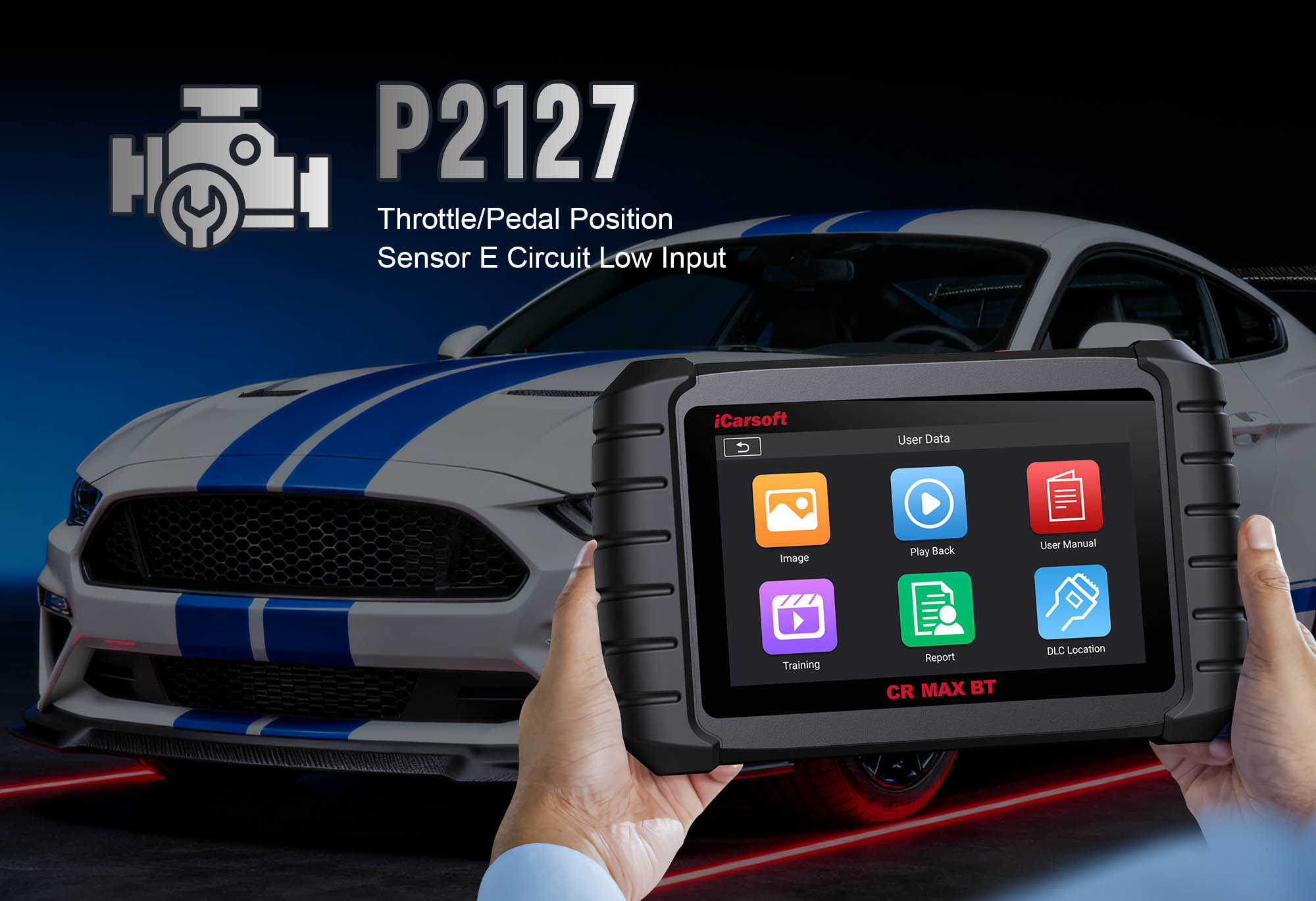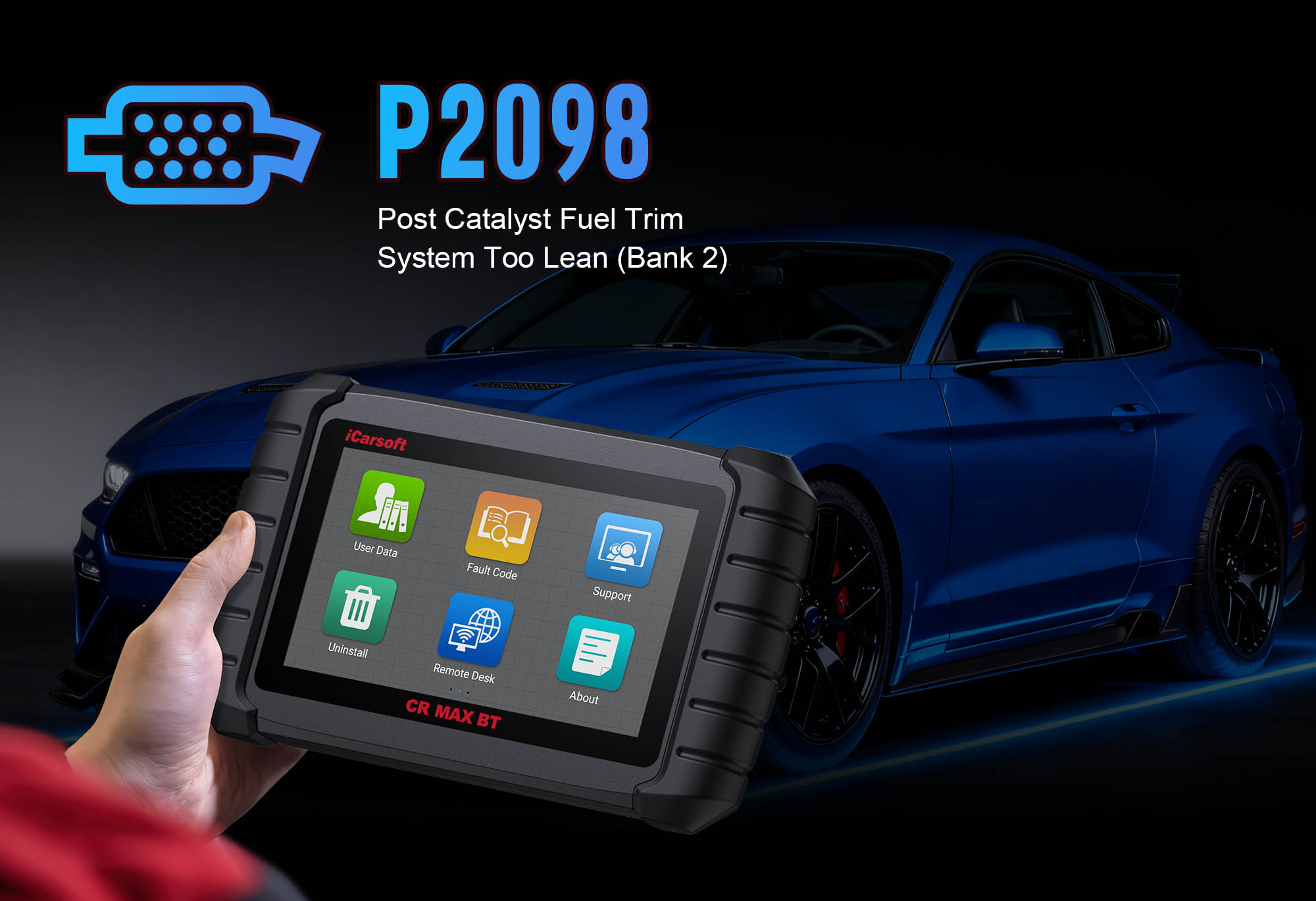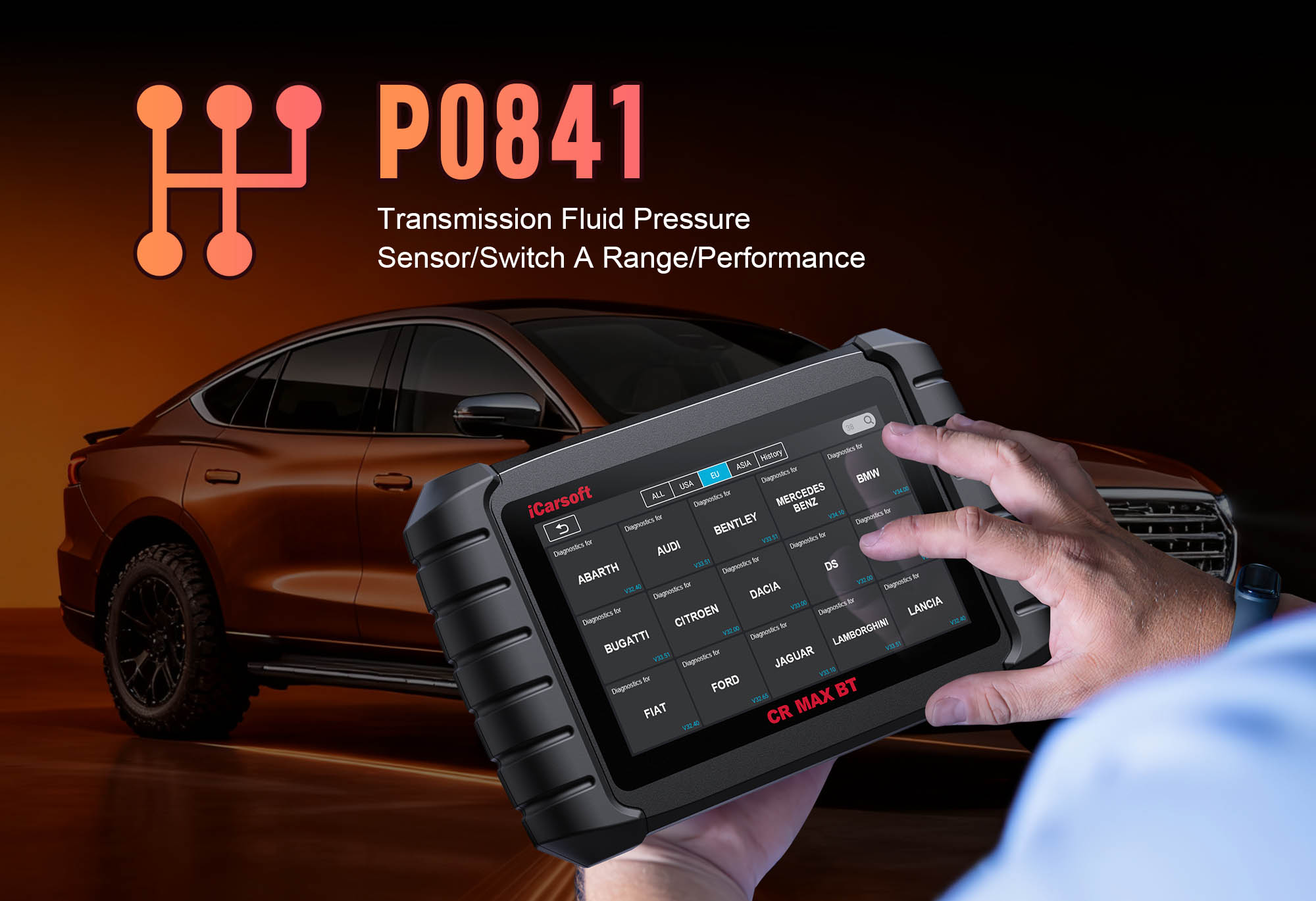Diagnose & Clear P04DB with iCarsoft CR MAX BT: Fix Exhaust Gas Recirculation (EGR) Cooler Bypass Control Circuit Range/Performance
Diagnose & Clear P04DB with iCarsoft CR MAX BT
If your vehicle’s check engine light illuminates, you notice reduced fuel efficiency, or it fails an emissions test, a diagnostic scan may return P04DB. This OBD-II code stands for "Exhaust Gas Recirculation (EGR) Cooler Bypass Control Circuit Range/Performance"—a fault targeting the EGR cooler bypass valve and its control circuit.
The EGR system reduces nitrogen oxide (NOx) emissions by recirculating exhaust gas into the intake manifold; the bypass valve redirects hot exhaust around the EGR cooler (e.g., cold starts) to prevent coolant freezing or cooler damage. When the valve’s circuit signals fall outside 0.5V–4.5V, the EGR system malfunctions, leading to poor emissions, decreased mileage, and potential engine overheating. Basic scanners only flag "EGR issues," but the iCarsoft CR MAX BT solves this. Let’s break down how to resolve P04DB step by step.
Understanding P04DB: Causes & Key Symptoms
The EGR cooler bypass valve is controlled by the ECM via an electrical circuit: the ECM sends voltage to open/close the valve, and a feedback sensor reports position. P04DB triggers when the valve’s position or circuit voltage is outside the expected range—indicating it can’t reliably bypass the EGR cooler.
Key Symptoms of P04DB
-
Check Engine Light (CEL): A steady CEL illuminates, and some vehicles display "EGR System Fault" or "Cooler Bypass Malfunction" warnings.
-
Reduced Fuel Efficiency: Improper EGR operation disrupts air-fuel ratios, dropping mileage by 10–15%.
-
Increased Emissions: Elevated NOx levels cause failure in state emissions inspections.
-
Engine Performance Issues: Hesitation during acceleration, rough idle, or occasional stalling (from incorrect exhaust recirculation).
-
EGR Cooler Damage Risk: Cold exhaust can freeze coolant (winter) or cause overheating (blocked flow), leading to costly repairs.
Common Causes of P04DB
|
Cause
|
Description
|
|
Faulty EGR Cooler Bypass Valve
|
Internal motor wear, carbon buildup, or sticking (from oil/carbon deposits) prevents proper opening/closing, causing erratic feedback.
|
|
Damaged Control Circuit Wiring
|
Frayed wires, rodent chew marks, or corrosion create resistance/shorts, distorting voltage signals to/from the valve.
|
|
Loose/Corroded Connector
|
The valve’s 3–4 pin connector (near EGR cooler) is loose, rusted, or soot-contaminated—disrupting signal flow.
|
|
Clogged EGR Cooler/Passages
|
Carbon buildup blocks exhaust flow, forcing the bypass valve to overwork and trigger range/performance faults.
|
|
ECM Malfunction
|
Rarely, the ECM’s internal control circuit fails—misinterpreting normal valve position feedback as "out of range."
|
Why iCarsoft CR MAX BT Excels at Diagnosing P04DB
The CR MAX BT outperforms basic tools with features tailored to EGR system and bypass valve diagnostics—critical for resolving P04DB accurately:
Wireless Bluetooth Connectivity
Test valves near hot exhaust components from 30 feet away—no cords hinder access or risk burns.
Live Voltage & Position Tracking
Monitors real-time circuit voltage (0.5V–4.5V) and valve position (open/closed %); flags out-of-range values instantly.
Bi-Directional Valve Tests
Sends direct commands to open/close the valve—verifies mechanical operation, distinguishing stuck valves from electrical faults.
AutoVIN Identify
Automatically detects vehicle make, model, and EGR specs (valve type, voltage range) in seconds—no manual diagram lookup.
Circuit Integrity Checks
Identifies resistance, shorts, or open circuits in wiring—pinpoints faults without disassembling the entire EGR system.
Step-by-Step: Diagnose P04DB with iCarsoft CR MAX BT
-
Safety First & Initial Visual Inspection
1. Cool the engine: Turn off vehicle and wait 1–2 hours to avoid burns from exhaust/EGR components.
2. Locate the valve: Use Component Location > Engine > Emission System > EGR Cooler Bypass Valve (near EGR cooler/exhaust manifold).
3. Inspect for buildup: Check valve body, EGR tubes, and cooler for black soot/carbon—heavy buildup = clogging.
4. Check connector: Disconnect, inspect for corrosion/bent pins; clean with contact cleaner, apply dielectric grease.
5. Inspect wiring: Follow harness to ECM (check frays/heat damage near exhaust); repair with heat-shrink tubing.
-
Connect the Tool & Confirm P04DB
Plug CR MAX BT into OBD-II port, power on, select AutoVIN Identify to retrieve specs. Navigate to Engine > Fault Codes > Read Codes to confirm P04DB. Tap Code Details for vehicle-specific insights (e.g., "Ford: EGR Bypass Expected 0.5–4.5V, Actual 0.2V") and check related codes (P0401, P0404).
-
Monitor Live EGR Bypass Valve Data
1. Start engine, idle 5 minutes to stabilize.
2. Navigate to Engine > Live Data > Emission System > EGR Cooler Bypass Valve—monitor two metrics:
- Voltage: Should read ~0.5V (closed) to ~4.5V (open); <0.3V or >4.7V confirms P04DB.
- Position feedback: Should match voltage (e.g., 0% closed = 0.5V); mismatches = valve/sensor fault.
3. Cold start test: Cool engine 10 minutes, restart—ECM should open valve (4.0–4.5V); no change = circuit/valve fault.
-
Test EGR Bypass Valve Circuit Integrity
Turn off engine, disconnect valve connector:
1. Power wire test: Set multimeter to "DC Voltage"—touch power pin + ground. Ignition "ON" = 12V; 0V = blown fuse/broken wire.
2. Ground wire test: Set to "Ohms"—touch ground pin + chassis. Normal = <1 ohm; >5 ohms = poor ground.
3. Signal wire test: Check continuity between feedback pin and ECM—no continuity = broken wire.
4. Resistance test: Check power-ground pin resistance; values outside specs (10–50 ohms for motor) = faulty valve.
-
Test the Bypass Valve & EGR Components
1. Bi-directional test:
- Reconnect connector, navigate to Special Functions > Engine > EGR System > Bypass Valve Actuation.
- Select "Open/Close"—listen for clicking/motor sound; visually check lever movement (if accessible); no action = stuck valve.
2. Cooler/passage inspection:
- Use videoscope extension to check for carbon buildup; clean with specialized EGR cleaner (follow tool’s "Maintenance Tips").
3. Valve service: Remove valve (8–12 ft-lbs torque), clean with EGR cleaner; replace if cleaning fails (use Part Lookup—e.g., Bosch 0928400824).
-
Repair & Clear P04DB
- Carbon buildup: Clean EGR cooler, tubes, and valve; set Service Reminder for future cleanings.
- Wiring/connector: Repair frays with heat-shrink; clean soot-contaminated connectors.
- Faulty valve: Replace with OEM-equivalent, torque to specs; verify feedback with CR MAX BT.
- ECM malfunction: Consult dealer for reprogramming (last resort—confirm with ECM Communication Test).
Clear code: Go to Engine > Fault Codes > Clear Codes and confirm P04DB is deleted.
-
Validate the Repair
1. Monitor post-repair data: Confirm voltage/position sync (4.5V = 100% open); valve opens on cold starts, closes when warm.
2. Test drive 30–40 minutes: Include cold starts, highway driving, and idle—no hesitation/rough running.
3. Run I/M Readiness Test: Via OBDII Functions to verify EGR monitor is "Ready" (for emissions compliance).
4. Save report: Use History & Report to document fault, repairs, and post-repair data.
Preventing P04DB Recurrence
-
Regular EGR Inspections: Use Service Reminder to test the bypass valve and clean EGR components every 30,000 miles—prevent carbon buildup.
-
Fuel Quality Maintenance: Use high-quality fuel and add fuel system cleaner every 15,000 miles (per Maintenance Schedule)—reduce carbon deposits.
-
Wiring Protection: Inspect the valve harness every 10,000 miles for heat damage/rodent chew marks; use heat-resistant loom near exhaust.
-
Lifetime Free Updates: Use One-Key Upgrade (Wi-Fi) to add new EGR diagnostic features (e.g., cooler flow tests).
Conclusion
P04DB’s EGR cooler bypass fault risks costly cooler damage and reduced efficiency. The iCarsoft CR MAX BT simplifies diagnosis with wireless convenience, live tracking, and bi-directional tests—ensuring you fix the root cause (carbon buildup, faulty valve, or wiring) instead of guessing.
With global vehicle coverage, 40+ service functions, and lifetime updates, the CR MAX BT is a long-term investment in EGR reliability and emissions compliance. Restore fuel efficiency, pass inspections, and protect your EGR cooler—all with one professional-grade tool.





